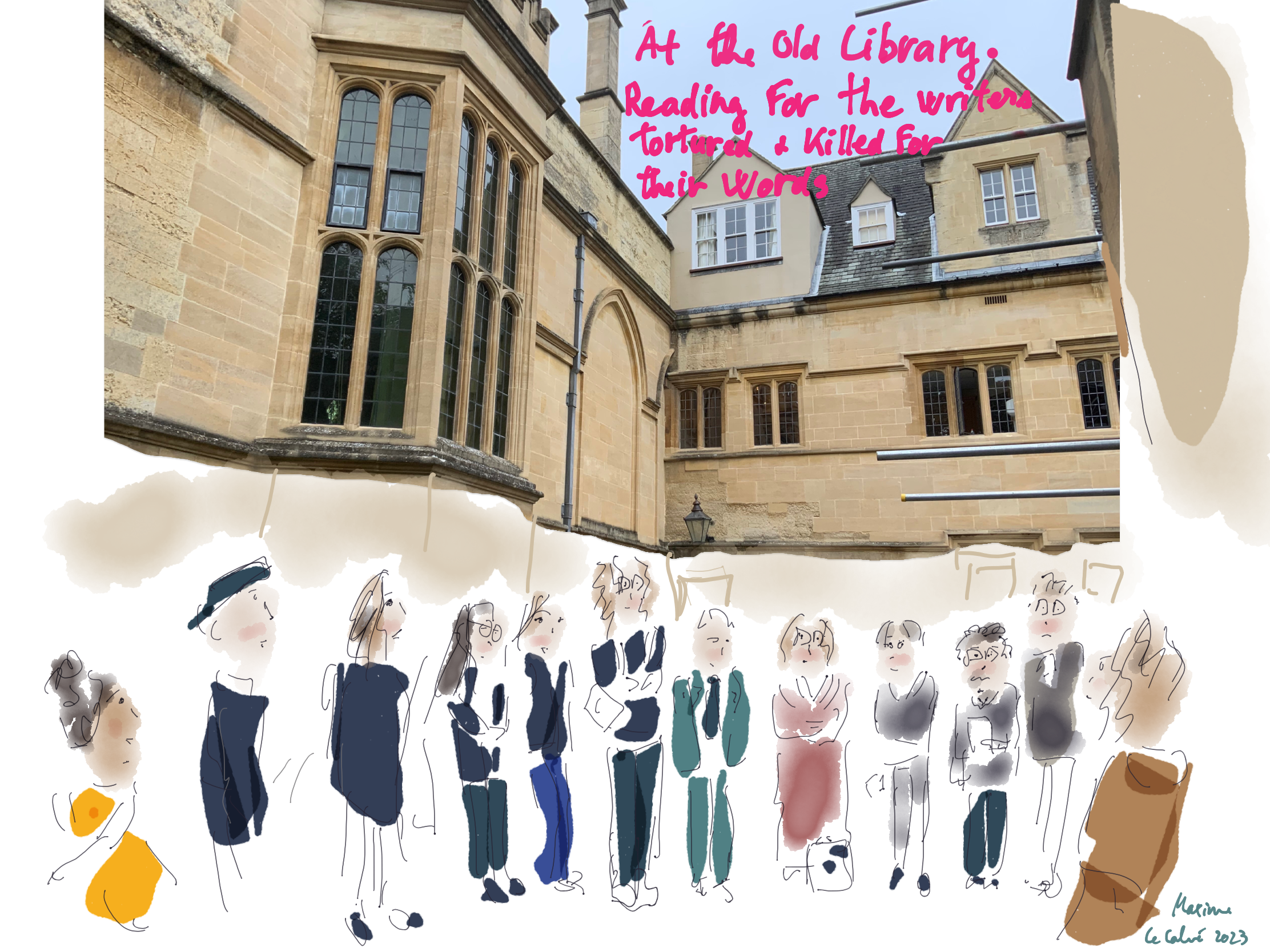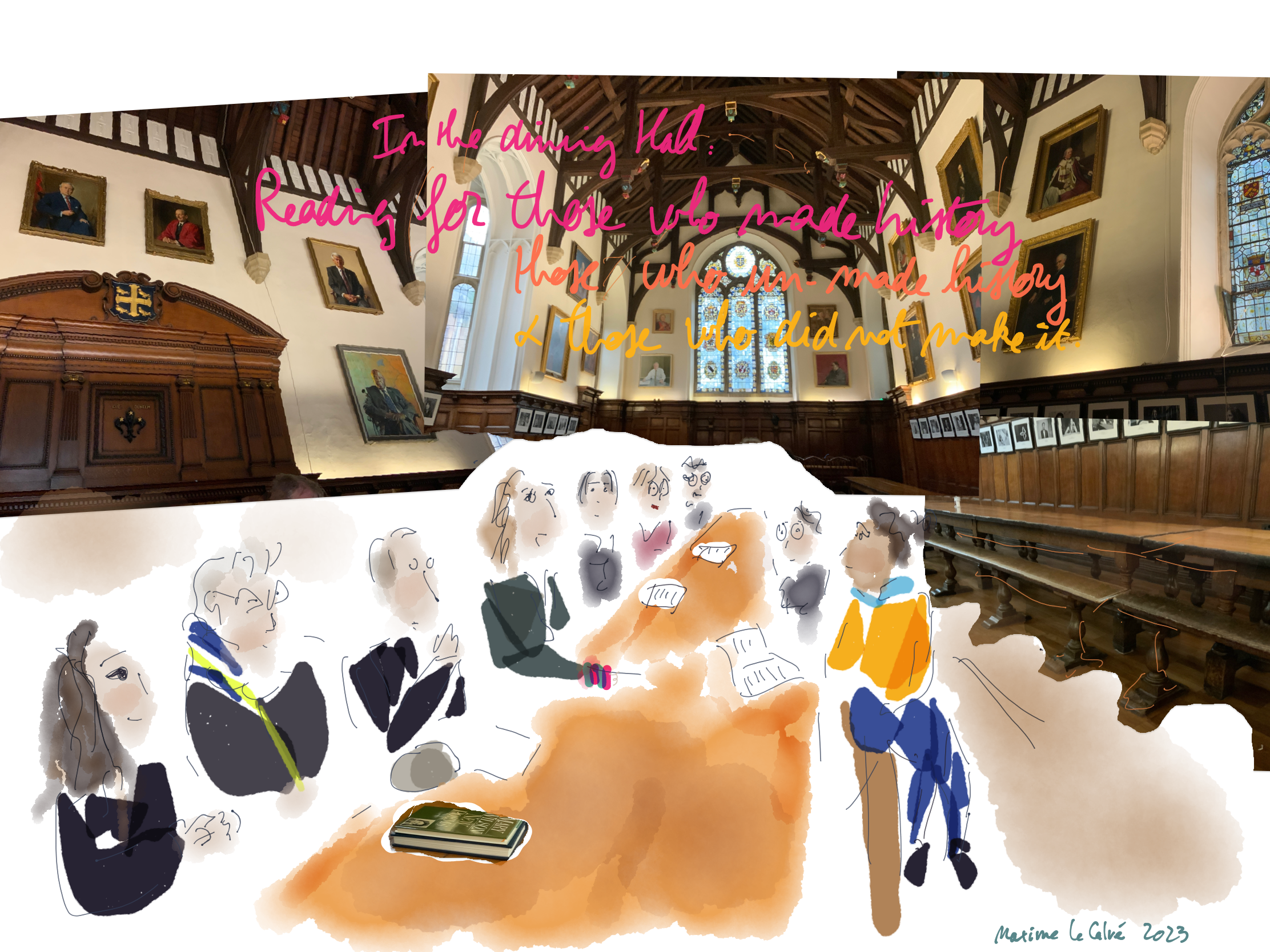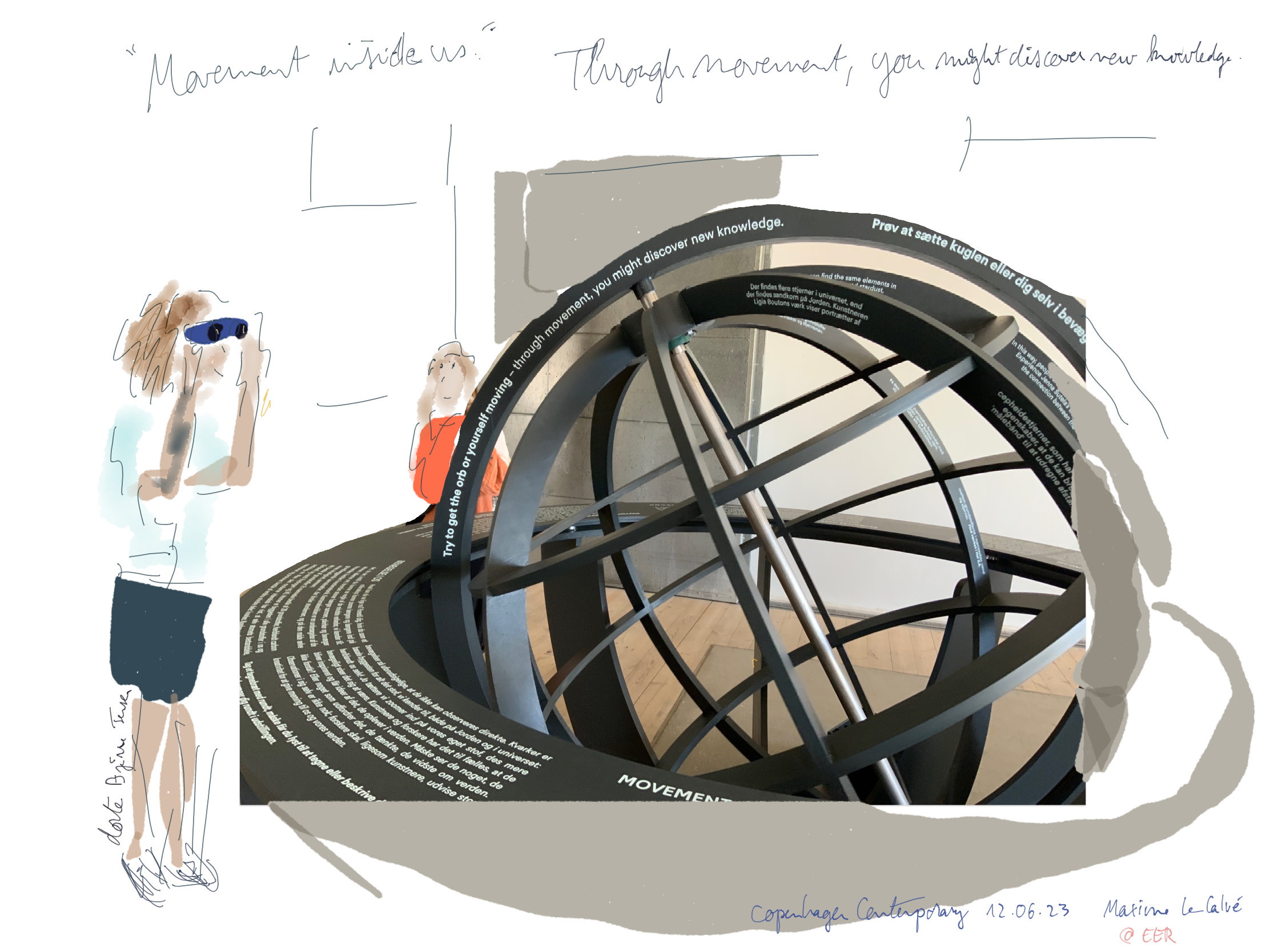This is a drawing of my wife about to give birth to our twins, last August. I noticed immediately that something was off with this endeavour —not the birth, but the idea of drawing through it. The notebook I had picked (I wanted it to be analogue this time) didn’t absorb the water correctly. Matter was trying to tell me something. Drawing wouldn’t cut through this one.
Maybe I’m sometimes using drawing to retreat from the situation I’m participating in. Useful sometimes. Usually, it actually works in the opposite way, as a form of participation. Maybe that’s what I was aiming at. C-section is letting the partner on the side even more that a vaginal birth (my wife has trained me not to call it unnatural —she’s the pro.) I thought I would keep a trace of it all.
Weirdly enough, my children decided to come into the world in the very same building where I have been conducting my last five years of fieldwork. The freshly renovated high tower of the Charité has a similar floor plan on every floor. The neonatology unit looks exactly like the neurosurgery station, 7 storeys higher. Very different clientele, I noted, didn’t need to be a trained ethnologist for that. The impression stuck with me: we were giving birth at my place of work. I could even sleep there, but I haven’t done it before.
The next moment after that painting, my wife got into the necessary prep for the surgery — that surgery was something we had not invited but had to be in this special case, through multiple factors scripted in ways that seem, even after the deed, just what had to be.
As I stepped in the room, she was already out of reach. Drawing seemed futile at this point, as someone was going with a knife through the skin and muscles of the love of my life. The obstetrician was actually super nice and sovereign, a woman who immediately inspired confidence as she admitted us barely an hour prior to this scene. We had been reallocated. The neonatology department was short of a slot at the other place. Then I was sitting there, and I remember my mechanical pencil fell on the floor from my pocket. The doctor was startled at the clicking noise and looked for the source of the foreign sound. I mumbled excuses and I sat on my notebook, very literally so, on the tiny black hooker.
Things went as well as they reasonably could. The tiny boys were in good shape, one of them slim, very slim, the other one a big baby. Sound and safe, all of them. After a few days, they were almost wireless. I kept running into colleagues in the elevator during the ten days we spent at the hospital.
We liked the staff. They liked us, too. They let us go home early. That was good for our 5-year-old, who was amazingly patient with us and with his grandmother, who flew in from France to attend to him.
So yes, I don’t have much to show for my intended piece of contemporary ethnography — it may be true that anthropologists attend to whatever we do in an ethnographic way. But, more often than not, isn’t fieldwork just about being there? The paper doesn’t always absorb presence. The vastly superior absorbing power of diapers had the final answer.





































